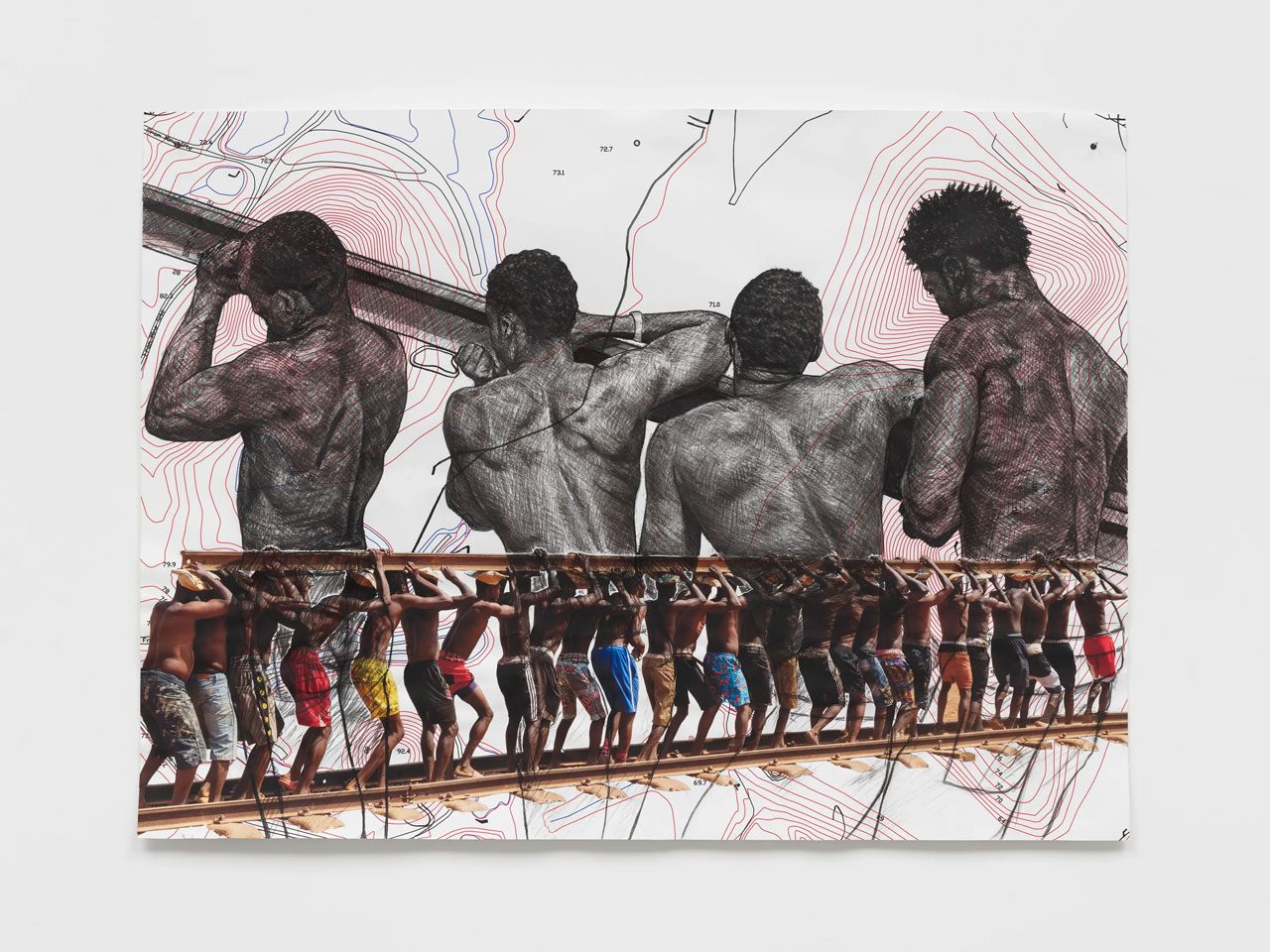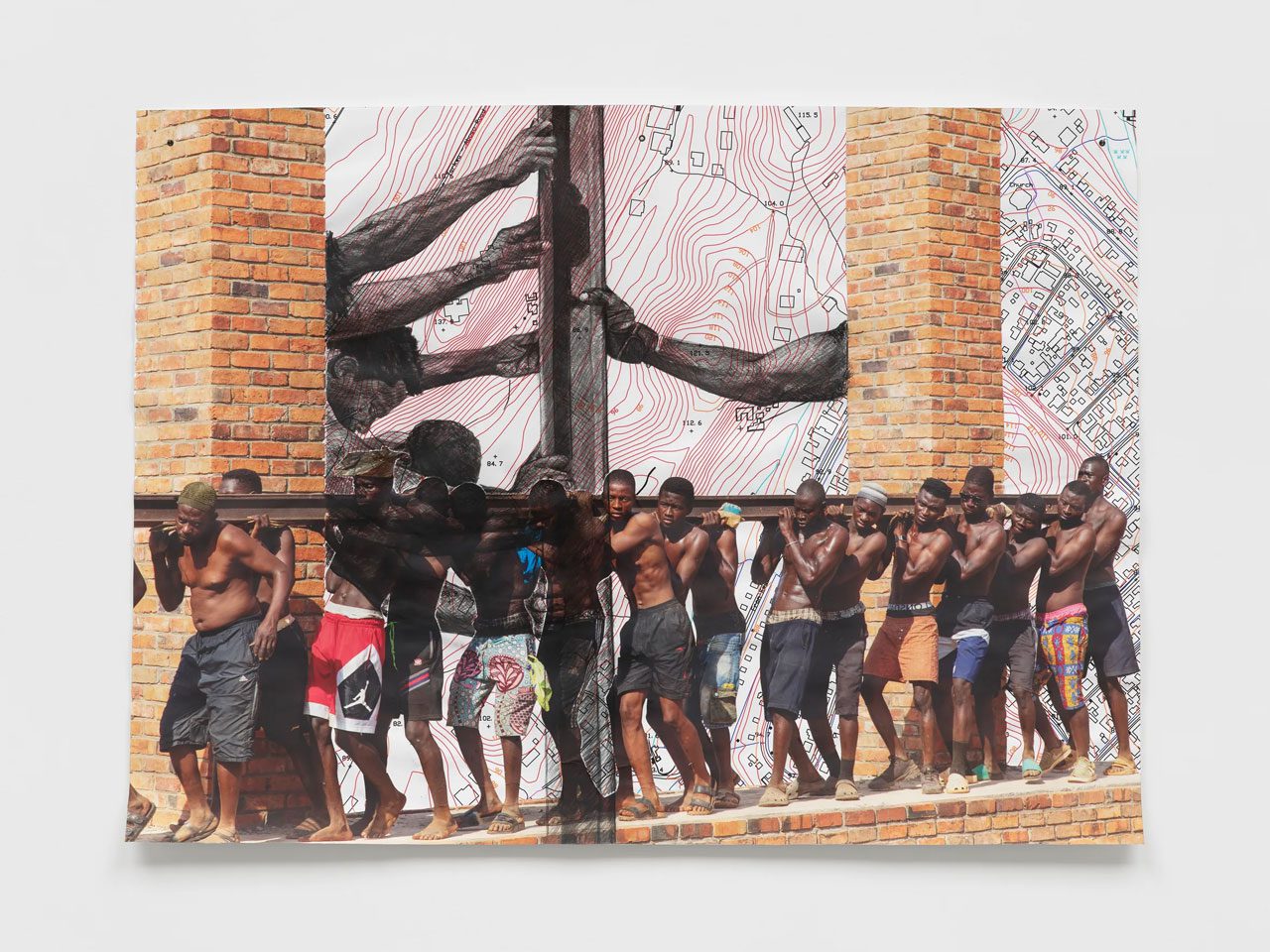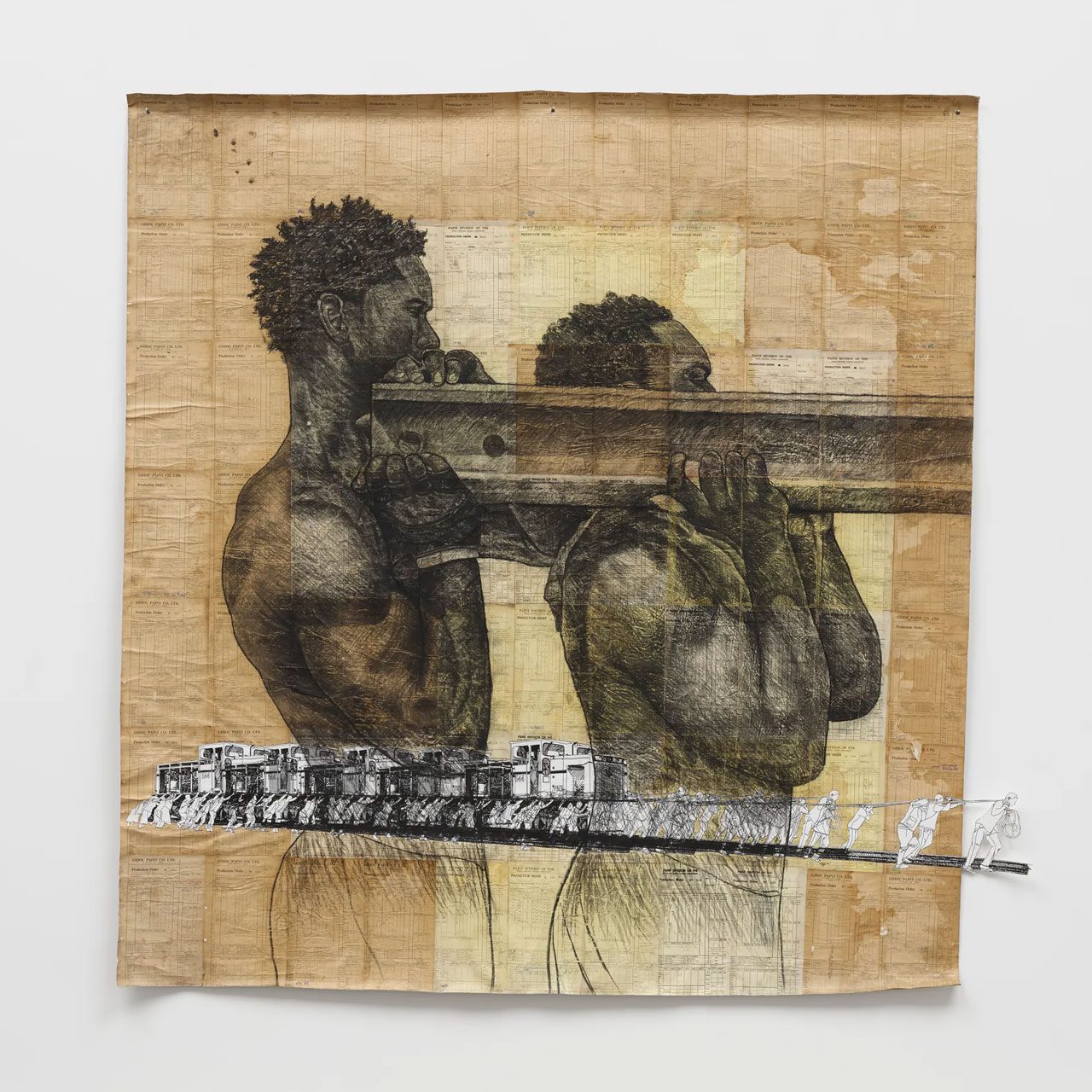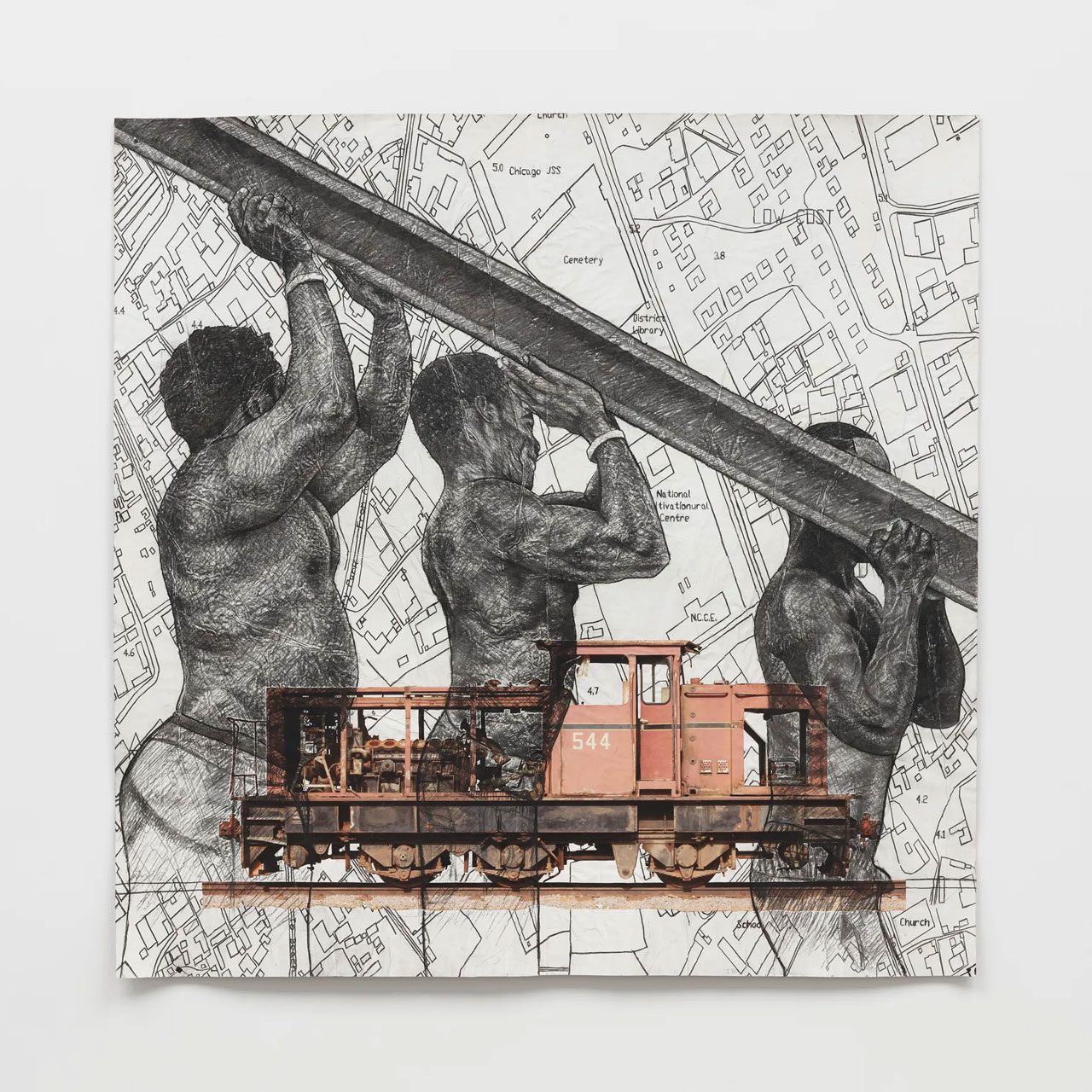ART CITIES:N.York-Ibrahim Mahama
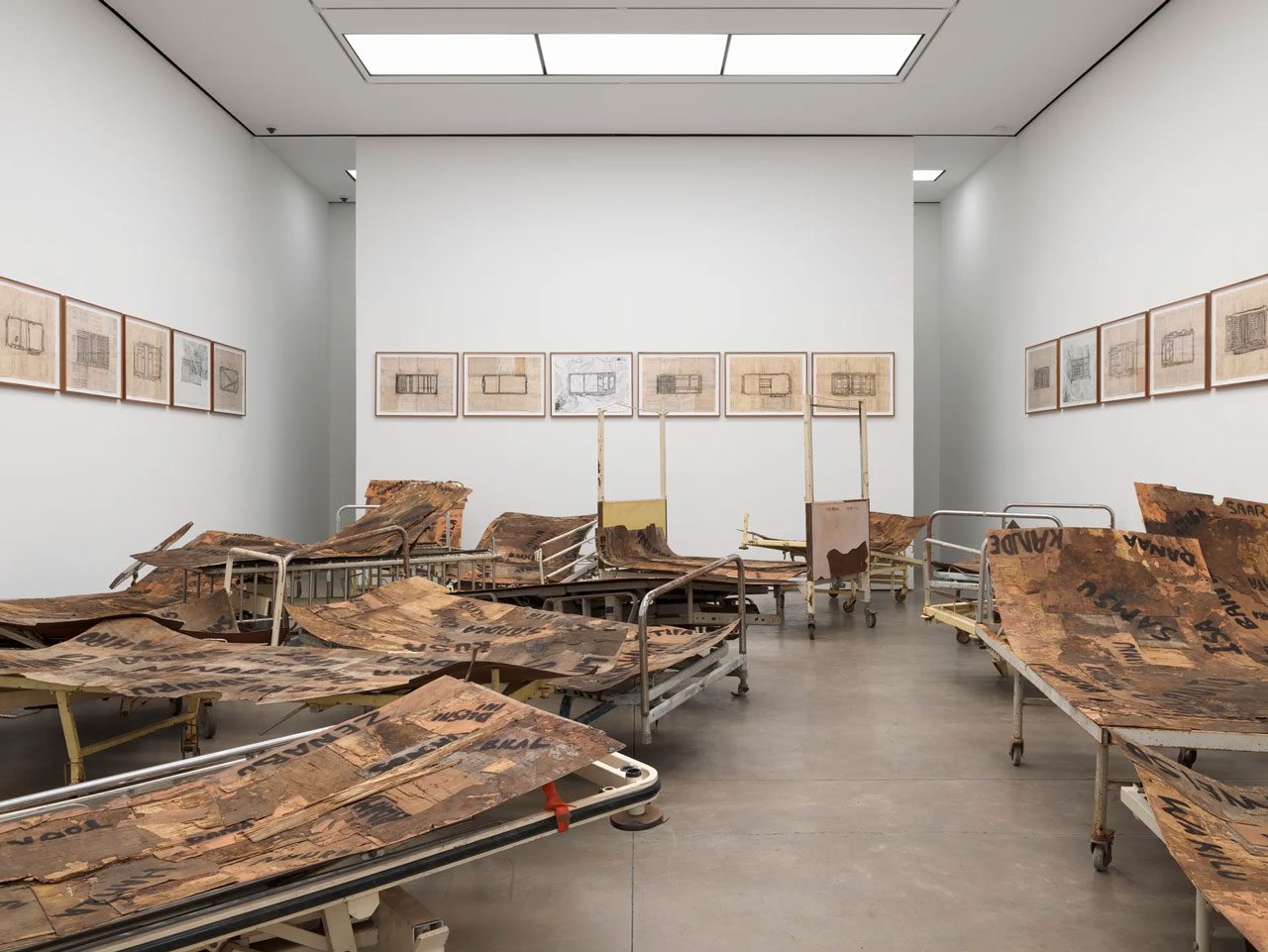 Crisis and redemption are impetus to the work of Ibrahim Mahama. Vast in scale and ambition, his interventions in public space open a dialogue with histories of failure and hope. From conception to the acquisition and production of materials, through to installation, he refers to the process as ‘time travel’, rerouting the residues of colonial and postcolonial utopias to create new opportunities. ‘I’m interested in the point where the relationship between the material and society, or the space it finds itself in, breaks down,’ he says.
Crisis and redemption are impetus to the work of Ibrahim Mahama. Vast in scale and ambition, his interventions in public space open a dialogue with histories of failure and hope. From conception to the acquisition and production of materials, through to installation, he refers to the process as ‘time travel’, rerouting the residues of colonial and postcolonial utopias to create new opportunities. ‘I’m interested in the point where the relationship between the material and society, or the space it finds itself in, breaks down,’ he says.
By Dimitris Lempesis
Photo: White Cube Gallery Archive
Ibrahim Mahama present “A SPELL OF GOOD THINGS”, his first solo exhibition in New York, which draws together ideas of physical labor, post-colonial collapse and reclamation. Best known for his ambitious installations, in which he covers entire buildings with repurposed jute sacks, Mahama has for many years gathered materials abandoned through institutional decline in Ghana. Forged during the period of growing confidence in the 1960s and 1970s, when newly independent West African nations were imagining a way forward after British colonial rule, Mahama regards these objects as carriers of both optimism and failure. Relics of self-ruling Ghana’s shortcomings in delivering on its pledges to its people, Mahama’s salvaged materials reflect an attunement to ‘the voids embedded within failures and their latent potential. The exhibition’s eponymous installation, “A SPELL OF GOOD THINGS” (2024), draws its title from contemporary writer Ayòbámi Adébáyò’s roman à clef* of the same name. Resonating with Adébáyò’s exploration of the systemic issues of post-colonial Nigeria, Mahama’s installation draws attention to questions of occupation, politics and infrastructure in his own native Ghana. Occupying the gallery’s main space, an assemblage of decrepit beds from the Tamale Teaching Hospital in Northern Ghana – where Mahama lives and works – sit alongside parts salvaged from the interiors of defunct train carriages. Several of the hospital beds are covered with leather ‘sheets’, inscribed with the names of individuals who died at the hospital, those displaced or migrated due to post-Independence economic instability, and the names of locations drawn from British colonial maps, tattooed with carbon sourced from kerosene lamps. Built in the 1970s, the hospital was commissioned by the then-Head of State, Colonel Ignatius K. Acheampong, as a training site for medical professionals and the primary hospital for the northern region. Despite projected success, severe resource shortages resulted in numerous preventable deaths at the facility, including, most poignantly, that of Mahama’s own brother. Parts of the leather ‘sheets’ Mahama incorporates are sourced from the furnishings of abandoned trains of the former Gold Coast Railway. Established by the British in the late 1800s primarily for the transportation of minerals and cocoa, the railway was constructed by migrant laborers from Ghana’s northern regions, who travelled south for work. The journey, coupled with their harsh working conditions, resulted in significant injuries and fatalities – a reality that Mahama insinuates through the mechanical breakdowns, or ‘deaths’, of the trains themselves. The leather sheets bear the impressions of the wooden supports they originally covered, and fragments of splintered wood create a cartographical scarring on their surfaces. Noting that the process of tearing the leather away was akin to peeling skin, Mahama sees the ‘tattooing’ of these sheets as a symbolic means of reopening the wounds of this history to interrogate post-Independence conditions and the latent potentials within its failures. In 2023, Mahama negotiated with the Ghanaian Railway Development Ministry to salvage entire train carriages, tracks and a number of machine parts from the pre- and post-Independence era that would otherwise have been discarded as scrap metal. These relics were transported nearly 700 kilometers by truck from Southern Ghana to RedClay Studio in Tamale – a cultural institution established by Mahama in 2020 – to be converted to classrooms, libraries, studio spaces and sculptures. The sheer scale of this endeavor, which also marked the arrival of railways of any kind in Northern Ghana, is documented in a number of large charcoal drawings displayed in the second-floor gallery. In these works, Mahama depicts the workers building the railway at RedClay, superimposed on archival maps of the region. Through this imagery, the artist seeks to retrace a line between the history of the tracks and the bodies of the men who bear their load – pointing to a literal and metaphorical burden, the artist here entwines the physical weight of the labor with the gravity of social and political exertion. Be they jute sacks, hospital beds or train parts, the artist understands the use of these objects in combination as inextricably linked with the loss of life, infrastructural collapse and widespread deterioration that has marred Ghana’s post-Independence era. By contrast, art, for Mahama, becomes a vessel of boundless ‘potential and possibility’, a medium which transcends the bureaucratic barriers that have perpetuated these failures. Through its transformative acts of reclamation and empowerment, Mahama’s work beckons us to ‘gather new forms of courage, new forms of imagination, to push the world forward in a more sustainable way.’
*Roman à clef: French meaning “novel with a key”, a novel that has the extraliterary interest of portraying well-known real people more or less thinly disguised as fictional characters.
Photo: Ibrahim Mahama, A SPELL OF GOOD THINGS, Mixed media, 2024, © Ibrahim Mahama, Courtesy the artist and White Cube Gallery
Info: White Cube Gallery, 1002 Madison Avenue, New York, NY, USA, Duration: 7/9-26/10/2024, Days & Hours: Tue-Sat 10:00-18:00, www.whitecube.com/

